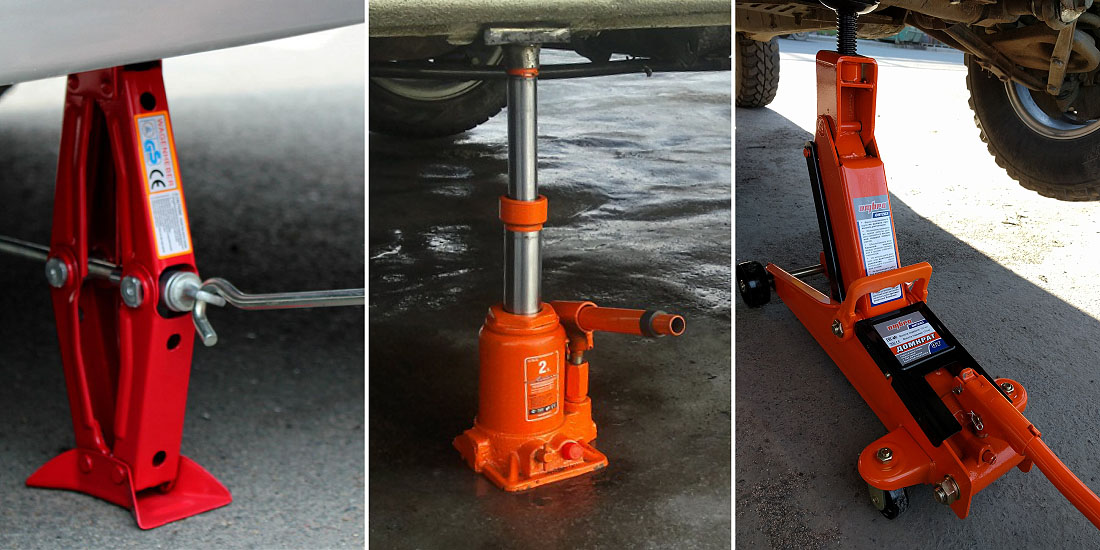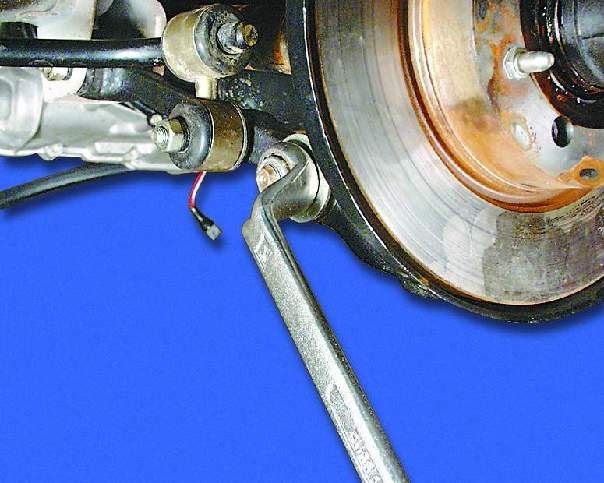
All about car jacks and stands
Almost everyone has changed a tire at least once in their life. While a spare tire is recognized as a necessity, the second most important tool for the job is a jack. Without it, it is impossible to lift the vehicle from the ground.
Jacks and jacks are not just for changing tires. They can also turn any space into a car workshop in no time, allowing users (and mechanics) to perform vehicle maintenance and repairs right in the driveway.
Jacks and stands are extremely safe and reliable when used correctly, and the jack and stand are used according to the weight of the vehicle.
Explanation of jacks and stands
Jacks
A car jack uses hydraulic power to raise part of the car, giving the user access to change a tire or perform repairs or maintenance. Jacks come in different types and weight categories. Selecting the right type of jack for the job at hand is key not only to the safety of the mechanic, but also to the vehicle.
Nearly every new car sold comes with a jack as a standard tool for changing a wheel. While these jacks are certainly fine for raising a car a few inches off the ground to change a wheel, deeper work requires a second jack or jack stands.
It is always wise to be careful when using a jack. If the vehicle to be lifted weighs 2 tons, use a jack rated at least 2.5 tons. Never use the jack on a vehicle whose lifting capacity exceeds its rated capacity.
Jack Stands
The jack stands are shaped like a tower or tripod and are designed to support the weight of the raised vehicle. They should be placed under the axle or frame of the vehicle to provide additional support to the raised vehicle.
After the vehicle is jacked up, the stands are put in place and the vehicle is lowered onto them. The jack stands have saddle tops designed to support the vehicle's axle. The stands should only be used on hard and level surfaces and only for vehicles weighing less than the carrying capacity of the stands.
Jack stands are available in various types and are classified according to their maximum height and load capacity. In most cases, the height of the jack is expressed in inches, and the lifting capacity is expressed in tons.
Jack stands are usually sold in pairs and are most commonly used with floor jacks. Stand height usually ranges from 13 to 25 inches, but can be as high as 6 feet. Load capacity can vary from 2 tons to 25 tons.
Jack stands are mainly used for repair or maintenance, they are not usually used for changing a tire.
Various types of jacks
Paul Jack
The floor jack is the most common type of jack used for maintenance and repairs. They are easy to move and place exactly in the place that needs to be lifted. The floor jack consists of a low mounted unit with four wheels and a long handle that the user presses to operate the hydraulic lifting part of the jack. The seat of the jack is a round disk in contact with the vehicle.
The base unit's low profile makes it easy to maneuver. The handle must be turned clockwise to close the valve before pressing the handle to raise the jack. The handle is turned counterclockwise to open the valve and lower the jack seat.
Jacks are the workhorses of the jacking community and are extremely useful for jobs that require a mechanic to get under the car.
scissors jack
A scissor jack is the type of jack that most people have in the trunk of their car. It uses a screw mechanism to generate lift. The main advantage of this type of jack is its small size and portability.
The jack is placed under the spot to be raised and the screw is turned with the handle to raise or lower the car. In many cases, the handle will be the pry bar that came with the car.
In most cases, the jack supplied with the vehicle is designed to be installed on specific vehicle jacking points. If a replacement is required, make sure it fits the vehicle and has the correct load capacity.
Hydraulic Bottle Jack
This bottle-shaped jack uses hydraulic pressure to lift heavy vehicles and other large equipment. These jacks have a high lifting capacity and must be used on a firm and level surface. The lever is inserted and inflated to raise the vehicle.
Although bottle jacks have a large load capacity and are fairly portable, they lack the mobility of a floor jack and are not stable enough to be used on the side of the road, making them less than ideal for tire changes.
As with all jacks, check the capacity of the bottle jack for vehicle weight before use.
Hi-Lift Jack
This is a special jack that is used with raised or off-road vehicles. These jacks are primarily used in off-road applications or where rough terrain limits the use of other types of jacks.
Hi-Lift jacks often have a large capacity rated at 7,000 pounds and can lift a vehicle up to five feet. They are typically 3 to 5 feet long and can weigh up to 30 pounds, making them unsuitable for transportation in a conventional vehicle.
Various types of jacks
Stand material
Jack stands don't vary much, but the material they're made from can make a big difference.
Small and lightweight coasters are usually made of aluminum or light steel. Jack stands for heavy vehicles must be made of cast iron or steel.
fixed height
These stands have a fixed height, which gives them the advantage of having no moving parts that can fail. However, they cannot be adjusted, so they are not as versatile or very portable. These racks are extremely reliable and durable and if they are only used in one place with the same vehicle, they are a great choice.
Adjustable height
Adjustable jack stands allow you to adjust the height. The most common type is a center stand tripod stand with a notch for height adjustment. Height adjustable with included ratchet.
Heavy duty adjustable stands often use a steel pin that fits into holes in the center post. High quality coasters come with a second safety pin.
The last type of height adjustable stand is called a swivel stand and the user must rotate the center stand clockwise to raise the height and counterclockwise to lower it.
Safety tips
Jacks and stands are very safe when used properly, but there are a few safety tips to follow:
Refer to the owner's manual for recommended lifting and support points on the vehicle.
The jack should only be used to lift the vehicle off the ground. Jack stands should be used to hold it in place.
Always use jacks when working under a vehicle, never go under a vehicle that is only supported by a jack.
Always block the wheels before lifting the vehicle. This will keep it from rolling. Bricks, wheel chocks or wooden wedges will do.
The jack and jacks should only be used on level ground.
The vehicle must be in park and the parking brake applied before the vehicle is jacked up.
Gently shake the car while it is on the jacks to make sure it is secure before diving under the car.
